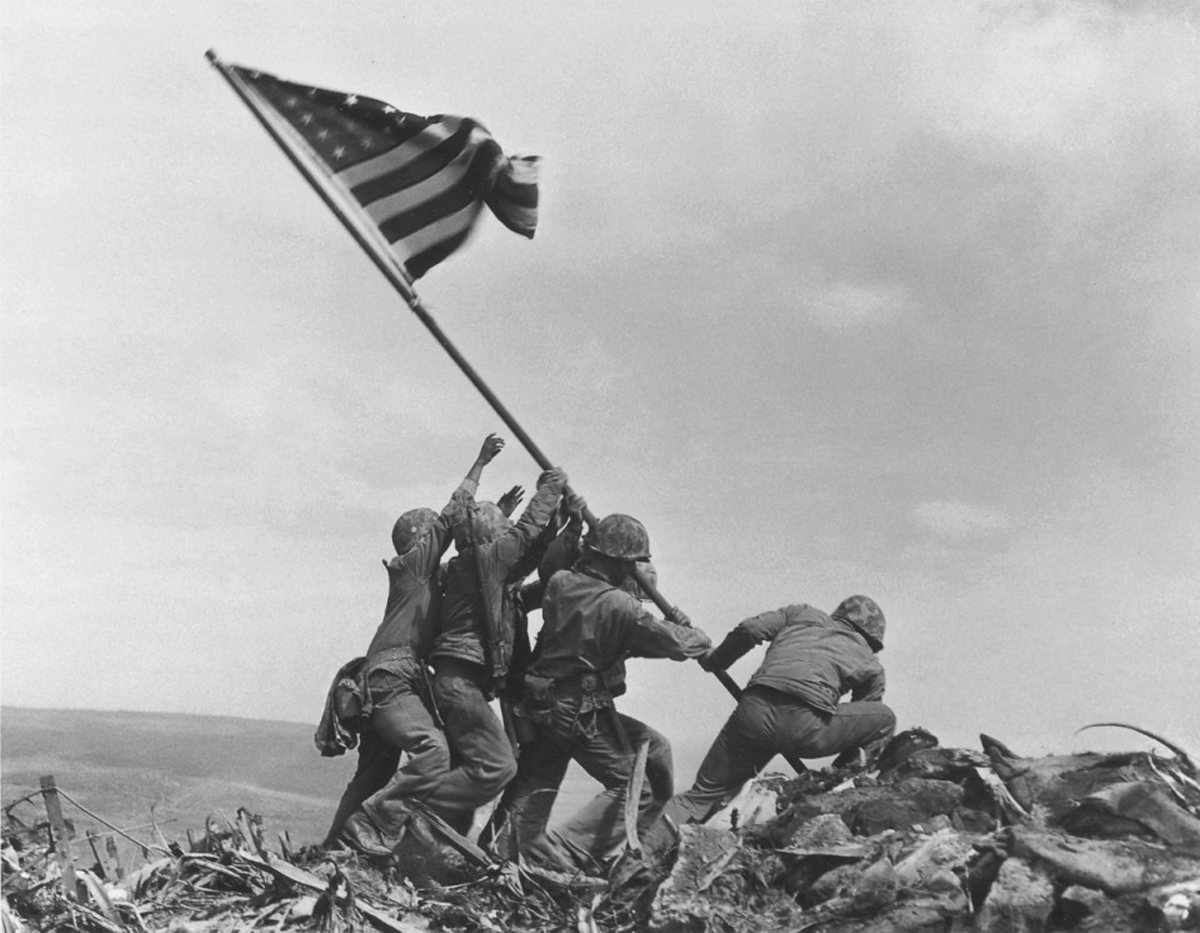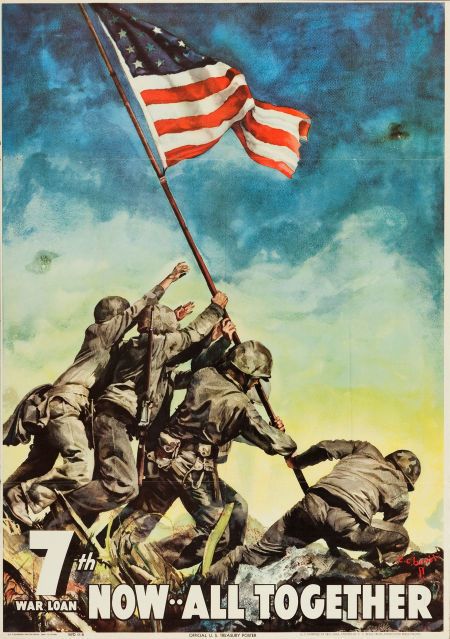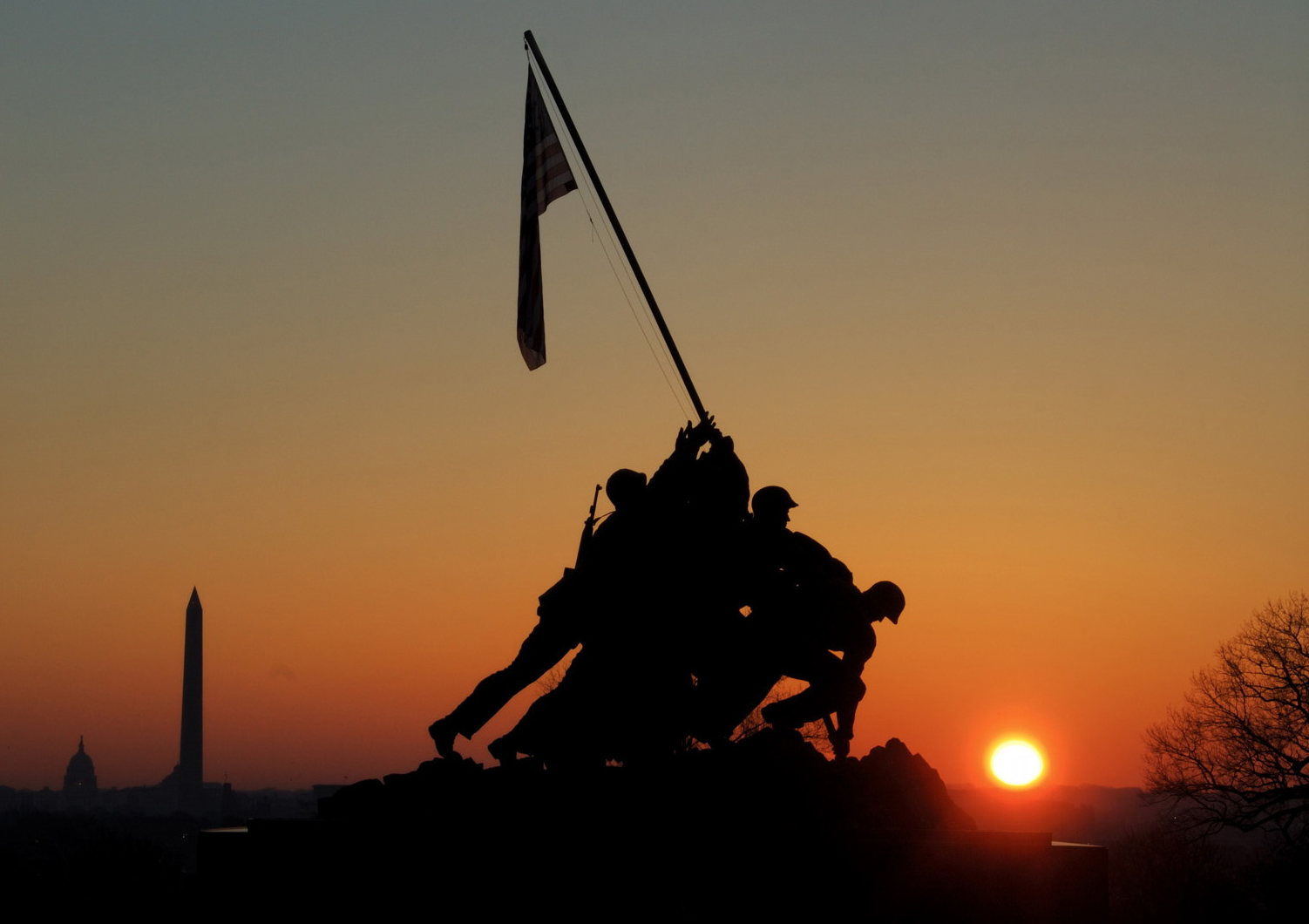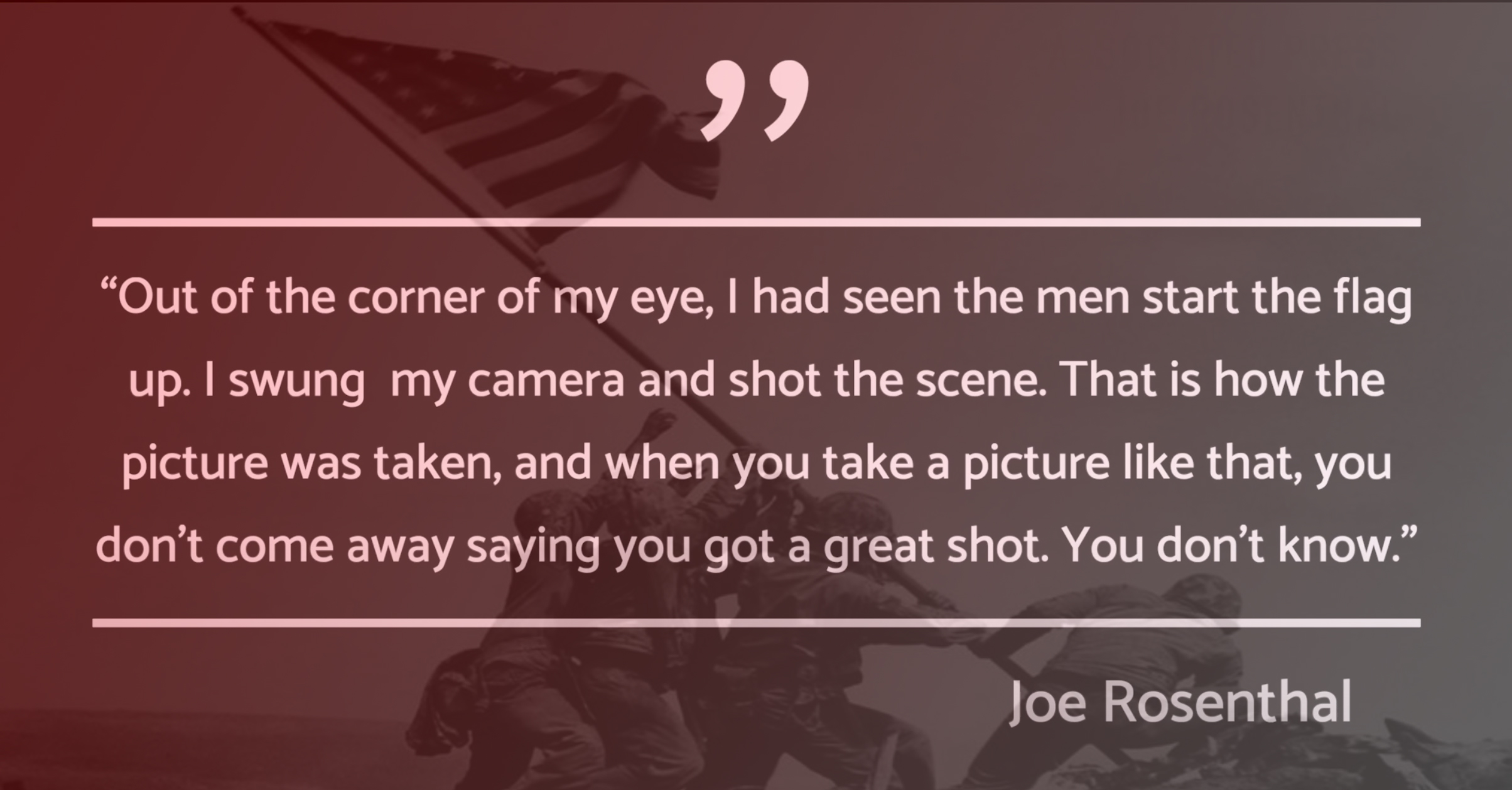

Joe Rosenthal and the Flag-Raising on Iwo Jima
Read Rosenthal’s own story about his picture of six U.S. Marines raising the American flag on Mount Suribachi —perhaps the best-known Pulitzer Prize-winning photograph.

Raising the Flag on Iwo Jima is an iconic photograph taken by Joe Rosenthal on February 23, 1945, which depicts six United States Marines raising a U.S. flag atop Mount Suribachi, during the Battle of Iwo Jima, in World War II.
Raising the Flag
Perhaps no Pulitzer Prize-winning photograph is better known than Joe Rosenthal’s picture of six U.S. Marines raising the American flag on Mount Suribachi on Iwo Jima. It was taken on Friday, Feb. 23, 1945, five days after the Marines landed on the island. The Associated Press, Rosenthal’s employer, transmitted the picture to member newspapers 17½ hours later, and it made the front pages of many Sunday papers.

The war-bond poster inspired by Rosenthal's prize-winning photo.
The photo was the centerpiece of a war-bond poster that helped raise $26 billion in 1945. On July 11, before the war had ended, it appeared on a United States postage stamp. Nine years later it became the model for the Marine Corps War Memorial in Arlington, Va.
Normally, the Pulitzer Prize Board considers journalism published in the previous calendar year for the prizes. It made an exception for Rosenthal’s picture, awarding it the 1945 prize for Photography a little over two months after it was taken.
F.A. Resch, The AP’s executive newsphoto editor, submitted it, supplemented by others taken by Rosenthal on Iwo Jima, on March 29, 1945. The Photography jury was just finishing its work and apparently did not consider it.
“We felt the material was so outstanding that it merited consideration accordingly,” Fesch wrote to a Pulitzer Advisory Board member.
“The endless citations which have been made in connection with the flag-raising picture — in Congress, as the basis for the Seventh War Loan drive, as the basis for numerous statue and memorial suggestions — are unprecedented in the history of news pictures.”

The Marine Corps War Memorial in Arlington, Va.
Fesch pointed out that The AP had transmitted to its members half the 60 pictures Rosenthal made on Iwo Jima. “To the best of my knowledge no newsphotographer on any assignment before or during this war has achieved such results either in terms of so many newsworthy pictures taken under dangerous conditions, or in terms of consistently high technical quality of the product.”
The Pulitzer Advisory Board acknowledged receipt of the photos on April 18 and assured Fesch they would receive consideration.
A short time later, it was announced that the Rosenthal photo had won the prize.
A misunderstanding later led to repeated allegations that the photo had been staged. Sgt. Bill Genaust, who had been with Rosenthal at the time of the flag-raising and made a film of it, was later killed in action. His film proved that Rosenthal had not staged the picture.
Here is Rosenthal’s own story about the picture, which the AP put out on March 7, 1945, less than two weeks after the flag-raising.
‘I hope this was worth the effort’
“See that spot of red on the mountainside?” the bos’n shouted above the noise of our landing craft nearing the shore at the base of Suribachi Yama.
“A group of Marines is climbing up to plant our flag up there. I heard it from the radioman.”
He was plenty excited — and so was I.
"This picture has done quite a lot to attract attention of people to what those men were doing out there, and they then want to get more of the story what kind of a battle it was, what their courage and tenacity was and the great losses, great sacrifices," Rosenthal reflected.
The fall of this 560-foot fortress in four days of gallant marine fighting was a great thing. A good story and we should have good pictures.
So in I went, back to more of that slogging thru the deep volcanic ash, warily sidestepping the numerous Japanese mines. On past the culverts where the Japanese dead lay among the wreckage of their own gun positions and up the steep, winding, always sandy trail.
Marine Pvt. Bob Campbell, a San Francisco buddy of mine, and Sgt. Bill Janausk of Tacoma, Wash., were with me and carried firearms for protection (which is disallowed to correspondents).
There was an occasional sharp crack of rifle fire close by and the mountainside had a porcupine appearance of bristling all over, what with machine and anti-aircraft guns peering from the dugouts, foxholes and caves. There were few signs of life from these enemy spots, however. Our men were systematically blowing out these places and we had to be on our toes to keep clear of our own demolition squads.
As the trail became steeper, our panting progress slowed to a few yards at a time. I began to wonder and hope that this was worth the effort, when suddenly over the brow of the topmost ridge we could spy men working with the flagpole they had so laboriously brought up about quarters of an hour ahead of us.
I came up and stood by a few minutes until they were ready to swing the flagpole into position.
I crowded back on the inner edge of the volcano’s rim, back as far as I could, in order to include all I could into the scene within the angle covered by my camera lens.
I rolled up a couple of large stones and a Japanese sandbag to raise my short height clear of an intervening obstruction. I followed up this shot with another of a group of cheering Marines and then I tried to find the four men I heard were the actual instigators of the grand adventure. But they had scattered to their units and I finally gave it up and descended the mountain to get the pictures out and on their way to possible publication.
The way down was quite a bit easier, the path becoming well worn, and men were carrying ammunition, supplies, food and rations necessary for complete occupation of this stronghold.
The Marine history will record Iwo Jima as high as any in their many gallant actions in the Pacific.
I have two very vivid memories: The fury of their D-day assault and the thrill of that lofty flag-raising episode.
It is hard now in the quiet atmosphere of this advance base to find words for it. The Marines at Iwo Jima were magnificent.
Source: Pulitzer.org


